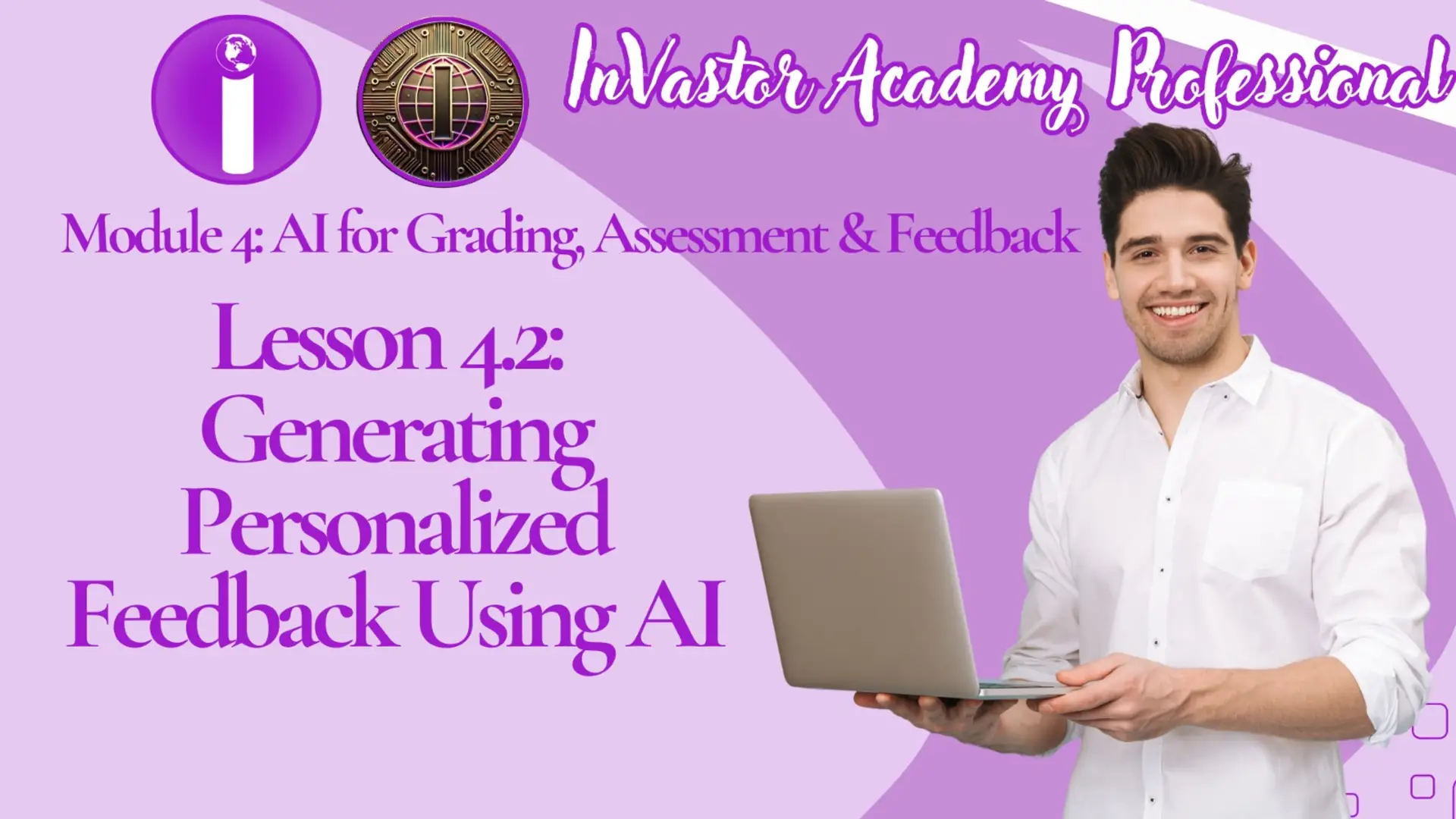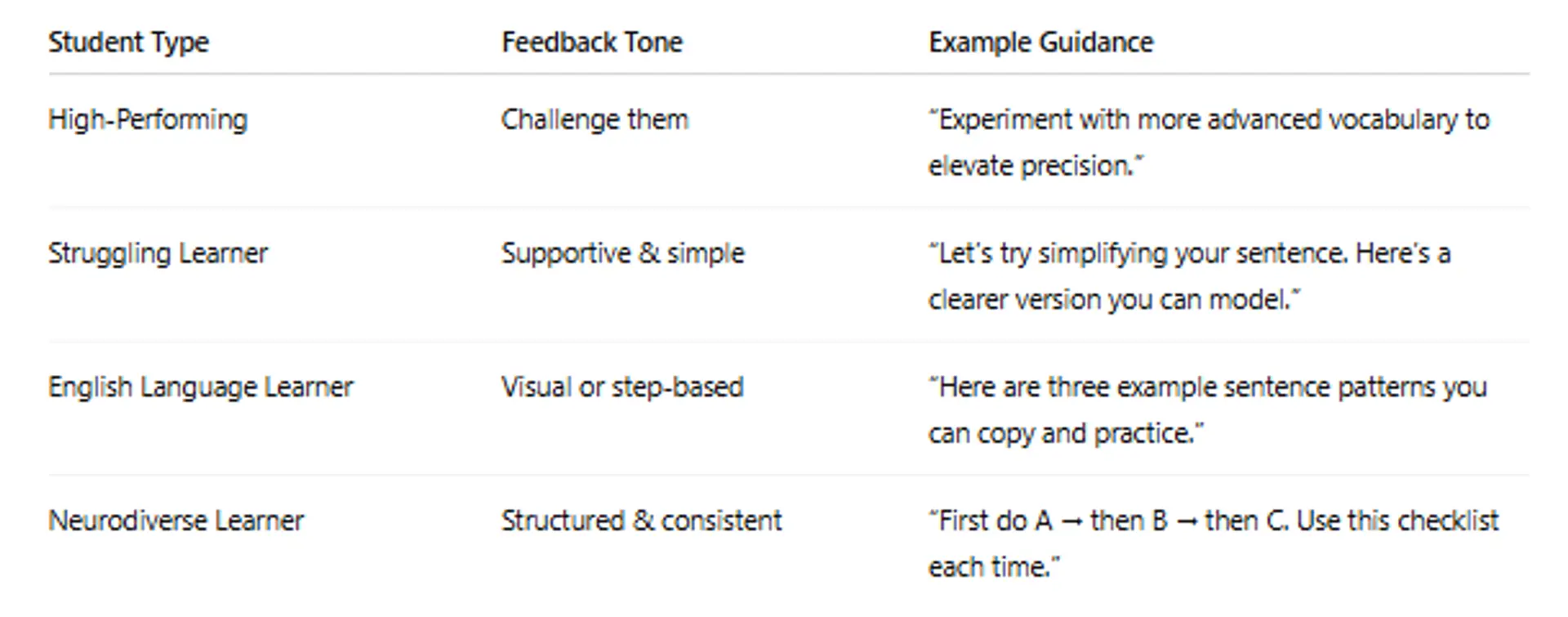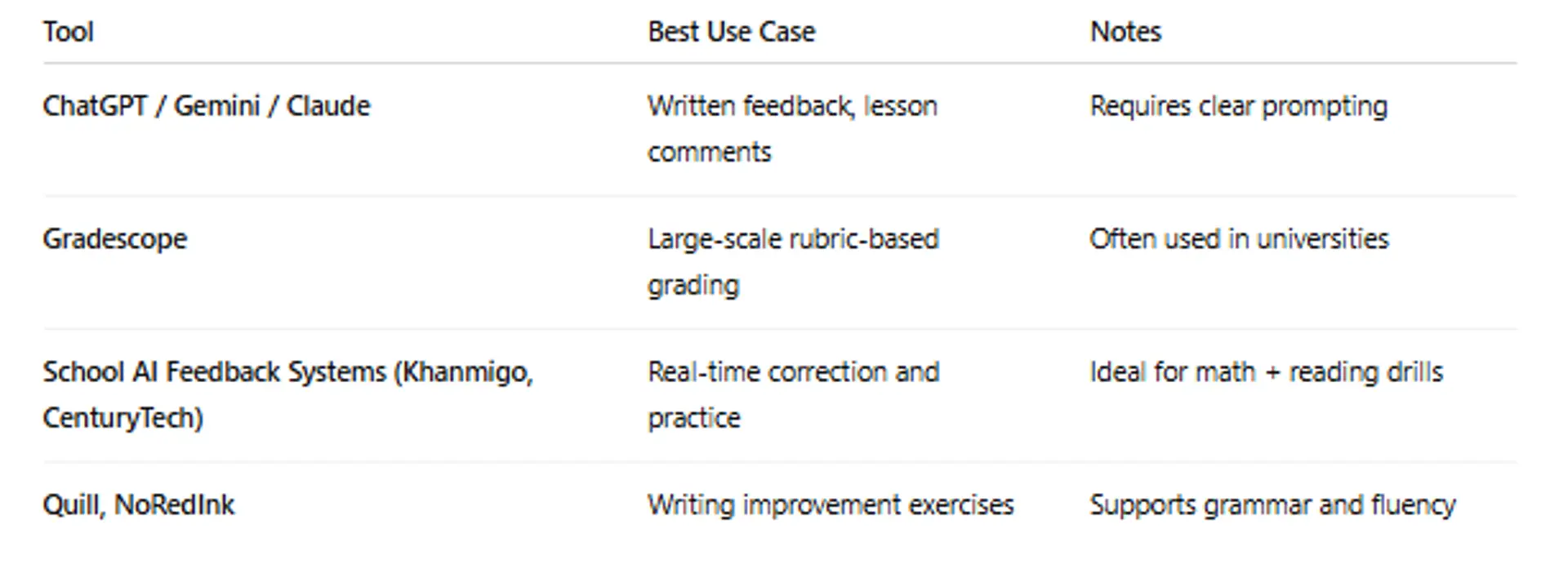

Module 4: AI for Grading, Assessment & Feedback Lesson 4.2: Generating Personalized Feedback Using AI
Module 4: AI for Grading, Assessment & Feedback
Lesson 4.2: Generating Personalized Feedback Using AI
Learning Objectives
By the end of this lesson, educators will be able to:
- Describe why personalized feedback improves student learning outcomes.
- Use AI tools to generate constructive, individualized feedback efficiently.
- Apply prompts and rubrics to guide AI feedback style, tone, and depth.
- Adjust AI-generated feedback for student ability levels and learning differences.
- Identify risks and ethical considerations when using AI to communicate with students.
- Integrate AI feedback into assessment workflows without losing the human connection.
1. The Role of Feedback in Learning
Feedback is not simply a correction tool — it is a core mechanism for growth.
Effective feedback should:
- Tell the student what they did well
- Clarify what needs improvement
- Explain how to improve
- Encourage the student to continue learning
However, providing individualized feedback can be challenging due to:
- Large class sizes
- Time constraints
- Repetitive scoring tasks
- Diverse student needs and ability levels
This is where AI can help amplify teacher impact — not replace it.
2. How AI Supports Personalized Feedback
AI can analyze student responses (writing, math steps, short answers) and suggest:
- Strengths ("Your argument is clearly organized...")
- Targeted improvements ("Try adding a supporting example...")
- Revision suggestions ("Consider rephrasing this sentence for clarity...")
- Next steps ("Review lesson video 2.1 and complete practice set B.")
What AI does best

AI supports feedback — teachers shape learning.

3. Types of Feedback AI Can Help Generate

When prompting AI, specify the type of feedback desired.
4. How to Prompt AI for Effective Feedback
The quality of feedback depends on the prompt you provide.
Best Prompt Structure
You are assisting with student feedback.
Student grade level: (e.g., Grade 8)
Assignment: (Paste or summarize task)
Rubric criteria: (Paste key points)
Student submission: (Paste text or describe work)
Provide:
- One clear strength
- Two specific improvements
- A supportive motivational closing statement
- Use positive language. Keep feedback student-friendly.
Example Output Style
- Strength: "Your introduction clearly outlines your main idea and shows strong organization."
- Improvement: "Try adding more detailed examples from the story to support your argument."
- Improvement: "Review your sentence transitions. Some paragraph shifts feel abrupt."
- Encouragement: "You are developing strong writing skills — keep refining your use of evidence!"
5. Differentiating Feedback with AI
Students learn differently. AI can tailor tone and depth to student needs:

AI helps personalize. Teacher ensures empathy.
6.Tools for AI-Assisted Feedback

7.Ethical Considerations
Educators must ensure:
- No private student data is shared in non-school-approved tools.
- AI feedback is reviewed before being given to students.
- Feedback tone remains supportive, never discouraging.
- Students are taught why feedback matters, not just what to fix.
AI is powerful — but it must remain human-guided.
8.Supplementary Resources
- What Is The Role Of Feedback In Writing Assessment? - Special Education Learning
- Harvard's AI Chatbot: Revolutionizing Computer Science Education with Personalized Feedback
- AI-assisted screening tools in systematic reviews: A brief overview and considerations
Lesson 4.2 Quiz — Generating Personalized Feedback Using AI (10 Multiple Choice)
You must score 70% to pass.
This quiz counts toward certification progress.
Click here for Quiz 4.2:
Conclusion
AI allows teachers to deliver faster, more customized feedback, supporting student growth and reducing teacher workload. However, feedback only becomes meaningful when delivered with empathy, clarity, and understanding — qualities only educators provide. The most impactful classrooms combine AI efficiency with the human heart of teaching.
AI helps students feel supported.
Educators help students feel seen.
Next and Previous Lesson
Next: 4.3: Identifying Bias in Automated Grading Systems
Previous: Lesson 4.1: Automating Grading and Rubric-Based Evaluation
Related Posts
© 2025 Invastor. All Rights Reserved

User Comments